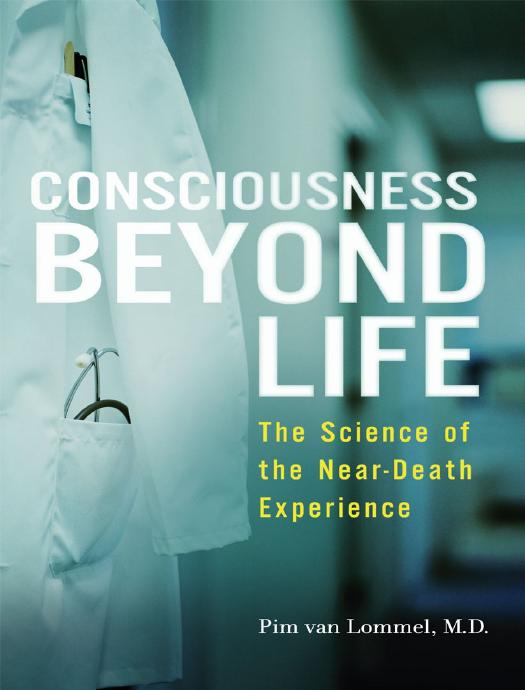Consciousness Beyond Life by Pim van Lommel

Author:Pim van Lommel
Language: eng
Format: epub, pdf
Publisher: HarperCollins
Published: 2010-10-26T16:00:00+00:00
Some Concepts from Classical and Quantum Mechanics
Because discussions of quantum mechanics can get very technical, I provide here a synopsis of the concepts that are necessary for understanding this and the next few chapters. This synopsis does not contain any references to scientific literature. Readers who would rather not delve into quantum physics just yet can skip this chapter (for now).
According to classical physics, objective reality comes about according to certain fixed principles. Everything in our world occurs within an unchanging structure of space and time on the basis of unchangeable laws that can be accounted for with unambiguous ideas about reality, causality, continuity, and locality. Classical physics is based on the premise that perceived reality in the physical world equals objective reality. This chapter will first look at a few “classical” physics concepts such as waves, fields, and information.
We start with electromagnetic fields, which are fields that are produced by electrically charged particles whose patterns travel in waves. An electromagnetic field appears to possess an infinite capacity for storing or encoding information. Think of the more than one billion Web sites to which computers all over the world have wireless access. All this wireless information is encoded as differences in wavelength. In particular, information is coded within interference, which is a phenomenon whereby overlapping coherent waves create a specific pattern. When two waves oscillate regularly in a certain relationship they are said to be coherent, and that coherent relationship enables interference. Information in a coherent field is like a hologram, which is a picture of, for instance, a three-dimensional object encoded in two dimensions. The holographic principle makes it possible to retrieve information about an object as a whole from any location in a coherent field. So far we are still in the realm of classical physics, where particles and waves behave in predictable ways.
Quantum physics turned the classical scientific conception of our material, manifest world upside down. New concepts from quantum physics include superposition, complementarity, the uncertainty principle, the measuring problem, and entanglement or nonlocality. All of these concepts relate to the same problem: certain observations cannot be predicted absolutely. Unless a quantum object is observed, it has neither a definitive location in time and space nor any of the fixed properties that classical physics ascribes to objects. Instead, there is a range of possible observations, each with a different possibility. The different possibilities are called probability waves. Light behaves like either a particle or a wave, depending on the experiment design, but never like both at the same time. This phenomenon has been termed complementarity. Particles and waves are complementary aspects of light. What had already been proven for light—that it has both a particle and a wave aspect—was found to apply to matter as well. All matter, 99.999 percent of which is emptiness, can ultimately be regarded as a wave function and thus possesses wave–particle complementarity.
Experiments with isolated photons show that a photon sometimes behaves like a wave, which means that it is entangled with itself.
Download
This site does not store any files on its server. We only index and link to content provided by other sites. Please contact the content providers to delete copyright contents if any and email us, we'll remove relevant links or contents immediately.
| ESP | Near-Death Experiences |
| Out-of-Body Experiences |
Animal Frequency by Melissa Alvarez(4425)
Sigil Witchery by Laura Tempest Zakroff(4207)
Real Magic by Dean Radin PhD(4100)
Fingerprints of the Gods by Graham Hancock(3964)
Aleister Crowley: The Biography by Tobias Churton(3605)
Journeys Out of the Body by Robert Monroe(3590)
The Rosicrucians by Christopher McIntosh(3491)
Alchemy and Alchemists by C. J. S. Thompson(3481)
Mysteries by Colin Wilson(3420)
Hitler's Monsters by Eric Kurlander(3291)
The Hatha Yoga Pradipika (Translated) by Svatmarama(3281)
Wicca: a guide for the solitary practitioner by Scott Cunningham(3149)
John Dee and the Empire of Angels by Jason Louv(3146)
Infinite Energy Technologies by Finley Eversole(2952)
Book of Life by Deborah Harkness(2893)
Dark Star Rising by Gary Lachman(2843)
The Book of Lies by Aleister Crowley(2817)
Aliens by Jim Al-Khalili(2803)
To Light a Sacred Flame by Silver RavenWolf(2787)
